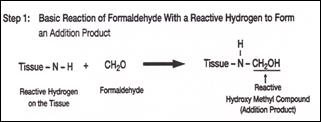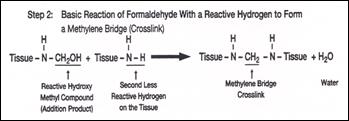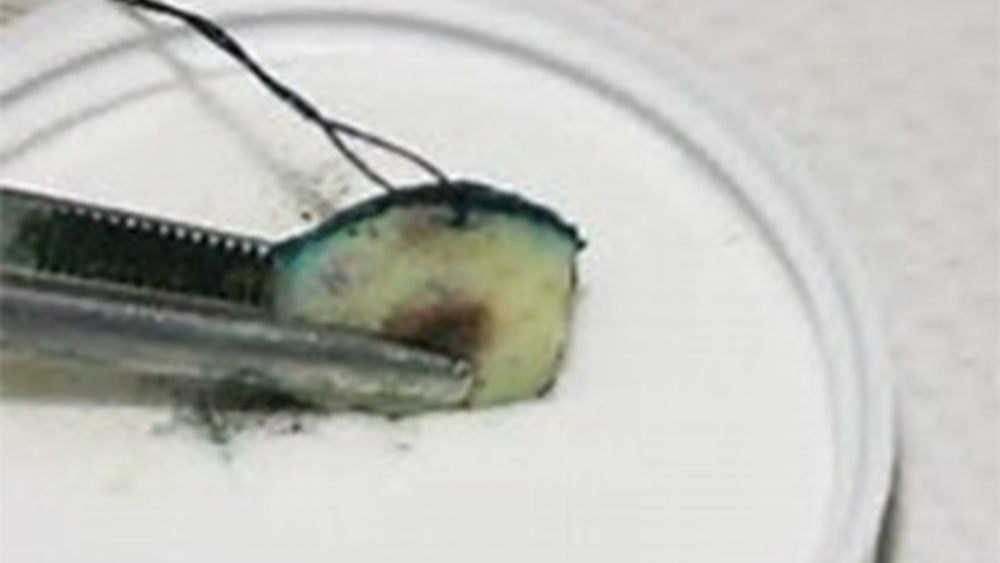


Therefore, it is important to have consistent optimal grossing at no more than 3-5 mm. thickness. In addition to agitation, additional steps such as mild heat can be used to enhance the penetration of fixatives, but these methods should be developed and validated as a part of the routine fixation procedures. It is impossible to optimize your day-to-day maintenance of optimal fixation if these additional measures are adopted to circumvent the acceptance of poor fixation practices such as inconsistent grossing quality.
Binding Time – the formation of the methylene bridges takes time to happen, even in the presence of optimally grossed tissues (thickness). The inconsistency in time given for fixation, i.e., the molecular binding or additive effect, will grossly affect the quality of cellular image presented at the end of the process. Image slides will progressively become blurry instead of sharp and distinct, and the histochemical staining with routine hematoxylin & eosin as well as other special stains will be altered because tissue will have less of an affinity for the dyes.
In this brief treatment we have discussed maintaining optimal fixation by first understanding the histochemistry of fixation. In part 2 we will continue this discussion with a focus on consistent process, procedure, and reagent management, from a daily operational standpoint and quality assurance practices. As mentioned in the early part of this article, laboratories must develop and be consistent with daily fixation protocol procedures. Achieving optimal fixation is easy. Maintaining it requires constant focus and commitment.
References:
Brown, S., “The Cost of Reprocessing”, Professional Development Series, Lab Management Consultants 2018.
Carson, FL, Histotechnology – A Self-Instruction Text, Chicago, IL., ASCP Press, 1997.
Hewlett, B., “NBF Penetration Rate”, Histonet Server, 2002.

